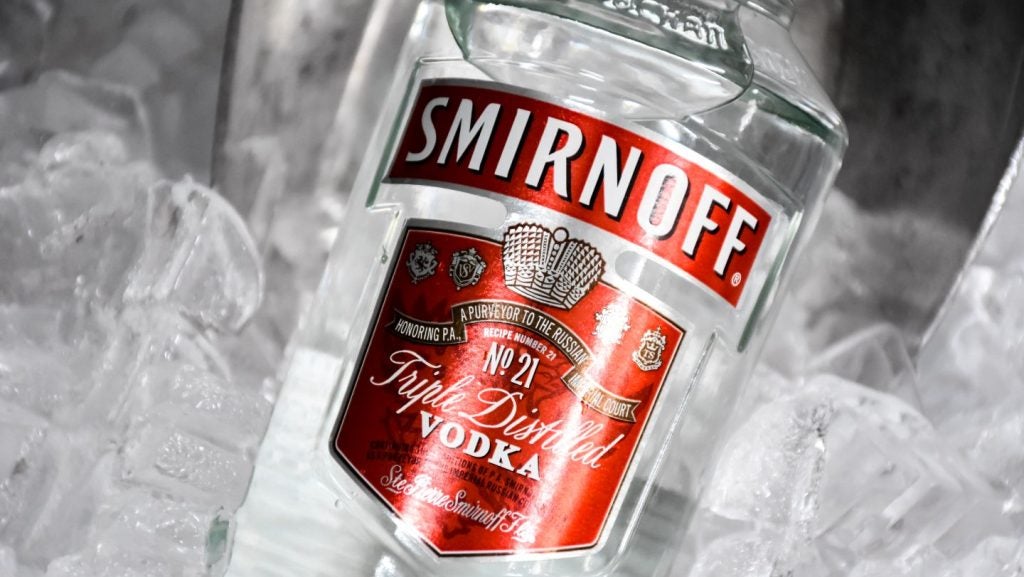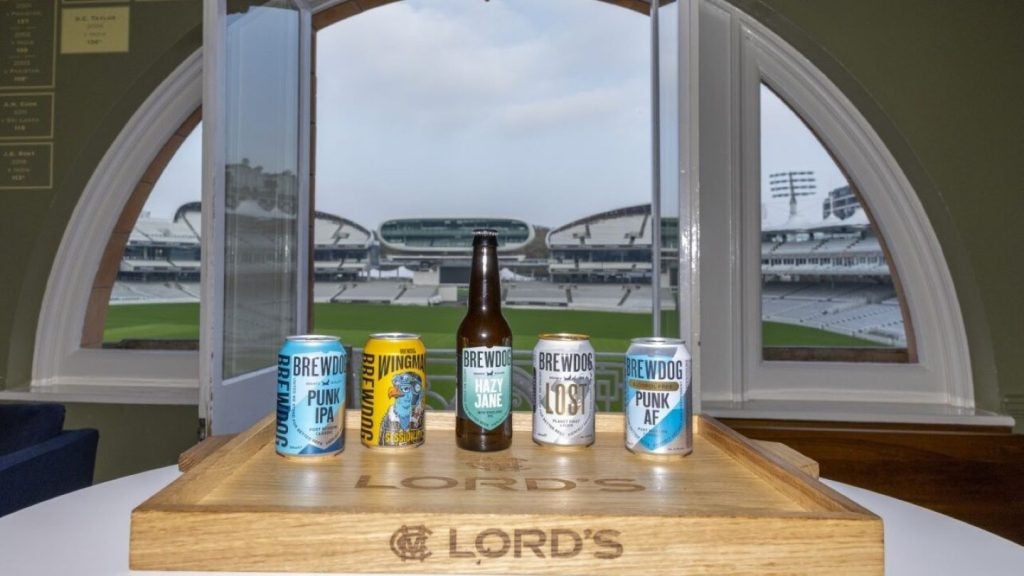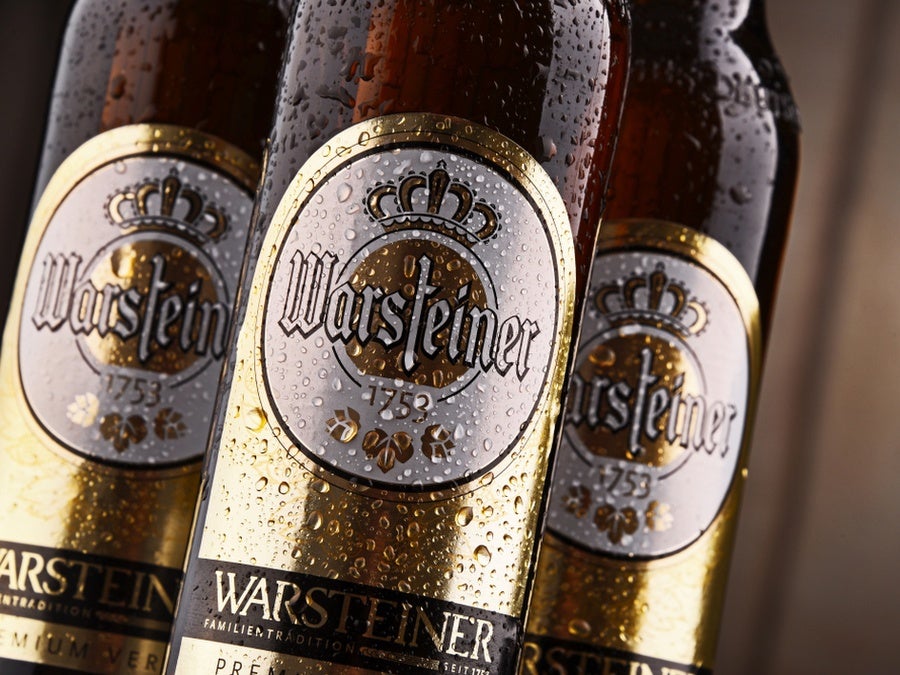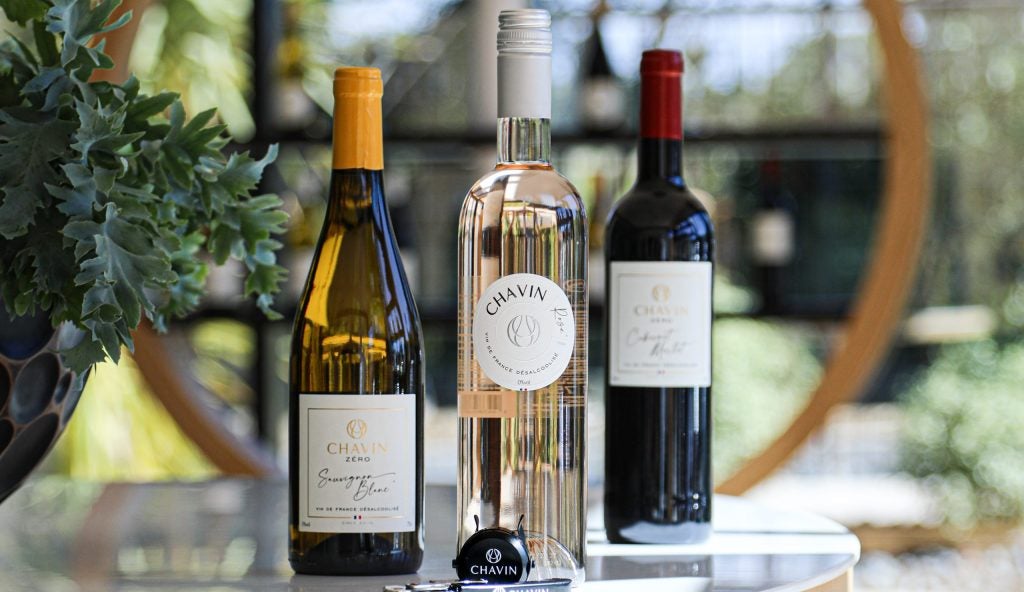Jesús Martínez Bujanda is the CEO and fifth-generation owner of Bodegas Valdemar, a wine business based in Spain's Rioja region but, since 2019, with a foothold in Washington state in the US.
Bodegas Valdemar already sells its Rioja in the UK but has now launched its wines from Washington's Walla Walla Valley in the country.
Martínez Bujanda talks to Just Drinks from Washington to discuss the development of Bodegas Valdemar's business in the US and how it has navigated the difficult trading conditions seen in Rioja.
Dean Best (DB): What is the demand in the UK for wines from Washington state?
Jesús Martínez Bujanda (JMB): Hopefully, it’s going to change a lot in the next five to ten years but it has been limited to more low-entry [wines], what here in Washington would be $7-15 or $18 in the supermarket. Unfortunately, that has been most of the wines that have been available in Europe. It is good to some extent to have that exposure because it makes Washington a bit more approachable for more customers but, at the same time, it’s not reflective of what is happening here.
There are two Washingtons – the Washington of the Chateau Ste. Michelles and the Washington of the small, boutique, five to 25-30,000 case production, high-end wineries. That’s what we are and that’s what we need to promote in Europe for people to know that, in Washington, they’re not just a good alternative in price to California but really good, world-class wines, regardless of the price.
DB: A year from now, what would you like to have seen from the performance of the Estates range in the UK?
JMB: I’m not too concerned about the volume we’re going to be selling Europe. It’s going to be a fraction of the sales. I just want to be able to be present in certain, you know, ‘image’ clients, in a certain kind of restaurants, retailers, so that people start recognising Washington for what it should be: a world-class wine region producing top-notch wines.
We’re growing a lot in the US. For the last three or four years, we’ve been assigning an allocation of wine so that we could start selling in Europe. We could have sold here DTC more profitably.
DB: Is the US the biggest market for the Estates range?
JMB: Yes. I mean, we are still very small. This year, we’re going to be releasing about 4,500 cases but, in the US, we’ve grown from last year in distribution, aside from DTC, from around 800 cases to 2,300-2,400 cases of the Washington wines.
One of the main points for the distribution in the US is it goes hand in hand with our Rioja wines. That’s a much more compelling offer for distributors. We’re finding distributors that I don’t think would show interest in the Washington winery by itself but they’re finding it because they really want the Rioja. Sometimes, it’s the other way around, too.
DB: And how are wines from Washington perceived by buyers in the US?
JMB: In some markets, especially in the East Coast, most of what they know is the entry level. The farther away you go from the West Coast, the more it’s changing. Minnesota is a market where Washington wines are doing really well. Sometimes it only takes two or three distributors that are excited about a region to make it a little bit more prominent.
But, especially in the super-competitive markets, like New York, New Jersey, I think Washington is going to struggle more. In smaller markets, it’s going to have an easier penetration. If you are in New York, you are competing with every wine region in the world.
One of the challenges Washington has to penetrate the US market is the lack of a ‘champion’ wine. If you compare with Oregon, it found Pinot Noir. If you ask anybody in the US, they know they need to have a Pinot Noir from Willamette Valley on their wine list. If you ask buyers in restaurants about Washington, they are like ‘Well, I love the Shiraz, the Garnachas are great. The Cabernets are really good, too. Wow. I tasted a killer Merlot.’ We’re all over the place. That can be good but also bad. It’s good that we are not known for only one drink but, at the same time, it will be good to have at least one grape that we’re the most known for.
DB: What should be Washington’s ‘champion’ wine?
JMB: Syrah is taking maybe the throne for that but I think not even us know exactly if it is Syrah or not yet. It has the better opportunity short term. I think a little bit more European-style Merlot should be that category that we’re known for.
DB: What’s your view of trading conditions in the US wine market?
JMB: The market right now is really tough. There is a glut of wine in distributors. Now that the DTC is a little bit low in the US, all the wineries are suddenly jumping into ‘Oh, wow, we need to do distribution because we need to sell this excess wine.’
Well, guess what? It doesn’t work like that. It requires three years of suffering, knocking doors to get results in the current market situation. For the last three years, we’ve been working hard without having a lot of success. Seeding in the field, you could say. This year, everything has exploded for us and we’ve seen the dividends of the last three years of work.
What used to be the most dynamic wine market in the world now is really, really slow.
Things are way slower than they were ten years ago. I remember describing the US market as extremely dynamic. You would talk to a distributor, they would ask for samples [and], within two weeks, they would taste. They would send you a PO a month later, so, you are working in the market two or three months after the first contact. Now it’s sometimes taking a year to two years between first contact to launch. What used to be the most dynamic wine market in the world now is really, really slow.
DB: What about consumer demand for wine in the US? Do you think that’s on a long-term decline?
JMB: I see a lot of pessimism in the market and in the media. Everybody’s talking about how it looks like the end of the world for the wine industry. I don’t think it was neither as bright as it was when everybody was like ‘this is great’ or as dark as they paint it right now. It’s going to be more difficult for the low-entry price point. If you are fighting on the $10-15, even $18-20 price bracket, I think it’s going to be tougher. If you are more on the premium side, I don’t see as much of a decline on demand. There’s going to be lot of opportunities there. There is always going to be a desire for high-end wines – understanding that high-end for anything is about $20, which I would say is pretty premium already.
There are headwinds but the biggest challenge to me … is the excess of wine in the market in general – and that’s global. There is excess wine in China, in Bordeaux, in Rioja, in. There is excess wine in Chile. There is excess wine in California, Washington. To me, that’s the issue short term. It’s not as much that the demand is going down.
DB: Rioja is still the majority of Bodegas Valdemar’s sales. How has this year been for the Rioja side of the business?
JMB: It’s in huge contrast to the general trend is right now. It’s reflective of the work we’ve done over the last five to eight years. We’ve repositioned the brands in Spain, not only in the US. About ten years ago, when I joined the business, we took the decision to decrease production and focus more on high-end wines.
Gran reserva and reserva represents a much larger percentage of our sales. Excluding the Spanish market, reserva sales are as big as the crianza sales in export, which is crazy. Ten years ago, crianza was maybe four times more.
This year, where I think most [Rioja] wineries are decreasing, we are going to grow as a company about 20-21%, excluding the US business: this is just the Rioja business, including the US sales, but only Rioja. We are growing in the Spanish market. We are growing in export. In export, we are growing mostly because of the US and also the production of – this is going to surprise you – kosher wines. We decided to bet on these two years ago. 2023 was our first harvest. We have a very large client in Israel that is taking a large amount of kosher wine. That was the deciding factor.
Not this year yet but we also have perspectives of selling decent amounts in other markets, especially in the US, of course. We have a couple of small contracts in Canada. We are getting some interest in some countries in Europe, smaller ones, but I think we found a niche.
DB: As a company, Bodegas Valdemar is looking to sell 140,000 cases this year, with sales of €9m ($9.47), correct?
JMB: Yes, roughly, we are at that volume right now. Let’s see where we close but we are going to close between 135,000 and 140,000. Before my time, we were producing around 250,000 cases, 275,000 cases of wine. Our average price per bottle right now is almost double what it was back then. It’s been a huge change in our focus. It’s been tough at some points in the road, like on any big change but years like 2024 are telling us that we took the right call.
DB: Rioja as a region is going through a tough period. What’s your impression of trading in Rioja and the outlook for the region?
JMB: It’s a pretty tough moment right now for Rioja because of that excess wine. We are not alone in the market on that. Bordeaux is on the same boat, although they are taking more extreme measures that we should take in Rioja. We should remove 10% of the vine surface.
More and more there are different Riojas. There is a Rioja of the huge producers and then the Rioja of the more boutique, medium size. I’m not talking really tiny producers. I’m talking wineries like us or Rioja Alta. They’re not small but they’re producing top-quality wine, like us.
More and more there is that distinction and more difference in the quality of the wines – and that’s okay. That has happened in many top wine regions in the world and nobody gets weird or strange. That has been a reality in almost any classic wine region in the world where you have really entry-level and really high-end producers.
Maybe different to Bordeaux or other classic wine regions, we are struggling more with differentiation and maybe more with the fact that there is not a classification of wines, right? Sadly, certain words that are used to describe Rioja are meaning less and less like crianza or reserva. I think gran reserva still means something but I think crianza, especially, with all that volume of wine at the very entry-level price, with not very good quality, it’s meaning less and less.

DB: Is there resistance to removing that percentage of vineyard area? Does there need to be political will for that to happen?
JMB: I don’t think there is resistance in the industry. I think most people agree that’s needed. It’s more about where the money is coming from, right? I don’t think the government is going to show as much inclination to help with this as they’ve done in France. Only extreme pressure from the grower side is going to move the needle. I don’t think the wineries have any political power with the government.
DB: I wondered if there were markets where Rioja was traditionally strong as a brand and where demand has come under pressure.
JMB: The Spanish market is the biggest example of that. Twenty five years ago, Rioja was king in Spain. Now, there are more wine regions everywhere. This is not only in Spain [but], when that happens, you have a super strong regional demand for regional wines that diminishes whoever is the king of the market the most.
If you go now today to markets like the Galicia region in the north-west, where 25 years ago – and I’m making this up, I don’t know exact numbers – the production of red wine was minimal and now it’s huge. Where are those red wines selling? All over the world. It has taken away from Rioja all over the world, small, but the Galicia region has taken a significant amount from Rioja domestically in Spain. Then you go to Ribera del Duero. What was the production of Ribera del Duero 25 years ago? What is it right now? Again, I don’t have the exact numbers, but huge.
If you were to tell me you were thinking of starting a winery, I would tell you not to.
You go to Majorca and Menorca and there is wine production. Regardless of the quality, there is a strong regional demand. It makes sense because people want to support their regional products. The same is happening in the US to some extent. There is production in every state in the US, which is crazy if you think about it. Every single state has a bonded winery. In a lot of cases, they don’t even have vineyards. They buy the wine from Washington or California and they bottle it. It takes sales from somebody, right? It happens all over Europe. I mean, what was the production of Austrian red wines 25 years ago?
DB: Against that backdrop, then, how can wine businesses in Rioja prosper?
JMB: Focusing more on the premium side of things is going to make you more resilient. You need to differentiate yourself, which obviously sounds really easy but that’s the tough part, right? Finding niche products can be really helpful.
One of the biggest reasons for investing in the US was exactly this: finding a good footprint in the markets that are more profitable. At the end of the day, the UK, it’s great in volume but it’s not the most profitable market. It’s always really competitive. Last year, it was our biggest market in the world but, in terms of profitability, it was not the best. This year it’s going to be the second in volume but only the third in profitability. The US is going to be our future.
I think focusing on the high-end premium sector – which is a way of differentiation – is something we’ve been finding a lot of success with. Maybe it’s harder to sell crianza but I think it’s been easier for us to sell single-vineyard wines, wines that are super-unique. That’s a huge factor for a winery like us.
DB: It’s hard for everyone to target the premium end, though.
JMB: It’s hard for everyone to differentiate yourself. It’s hard for everyone to find a niche product that is successful. In summary, the wine industry is really tough. It’s always been tough but it’s in a really difficult moment. If you were to tell me you were thinking of starting a winery, I would tell you not to. I guess it’s not only the wine industry. The market is tough in general, there is a lot of competition in every industry, and you just need to find your niche and your differentiator, right?















